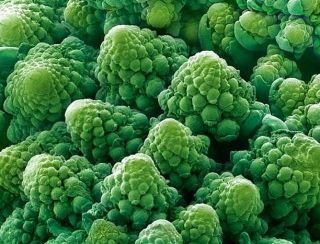Electrifying electron microscope photography!
Here at AnArt4Life blog, we are always on the lookout for quirky, weird, or amazing art.
For example, exactly one year ago today, Anne published a blog on entomological art, showing us the microsculptures of insects created by Englishman Levon Biss. Biss is a commercial sports photographer and became interested in photographing insects through his son. It’s a fascinating story and video, and the link is provided at the bottom of the page.
One of our subscribers, John Pickup, OAM, sent us some fascinating images taken by an electron microscope, and thought they were worth sharing with you all. So, on the one year anniversary of Anne’s blog on insect photography, here are some other micro images.1
They are taken from a book called Microcosmos, by Brandon Broll,1 published in September 2010. Most of the 205 images in the book were taken by a Scanning Electron Microscope (SEM), which increases the magnification from 20 times to up to 22 million times, depending on the type of image being looked at!


(L): The book cover, courtesy of Amazon. (R): An electron microscope, courtesy of David J. Morgan, Cambridge, UK and Wikipedia, via the Creative CommonsAttribution-Share Alike 2.0 Generic license.



(L) A calcium carbonate crystal (C): A cauliflower head. (R): Interwoven threads of nylon stockings. Credit: Courtesy of “Microcosmos”, by Brandon Broll, and the images from the Science Photo Library, London. (sciencephoto.com).
Perhaps you remember looking through a microscope at school for a science project? Perhaps it was a droplet of water, or you may recall having to delicately cut a thin cross section of something to mount on a slide? That’s because the usual optical microscope works on the principle of looking through the object on the slide and magnifying the image.
Put very simply, a scanning electron microscope works by shooting a beam of electrons over the surface of an item and scattering them. A detector registers those electrons and turns it into a picture which is then hugely magnified and displayed on a TV screen.2 So you don’t get to see the insides, or the interior, of the item you are looking at, just the 3D surface.
Usually the resulting surface picture comes out in grayscale. However, often these images are then colourised through the use of feature-detection software, or simply by hand-editing using a graphics editor.3
There are different types of electron microscopes. If you would like to know more, click on the following bookmark:

But now let’s look at a few more stunning images. Some of these you might find rather revolting, but I’ve kept those to a minimum!




Top left: Eyes of a mosquito. Top right: Mushroom spores. Bottom left: Surface of a read-only microchip. Bottom right: The surface of the human tongue! Courtesy of “Microcosmos”, by Brandon Broll, and the images from the Science Photo Library, London. (sciencephoto.com).




Top left: A clutch of moth eggs on a raspberry leaf. Top right: the fibres of a cigarette paper. Bottom left: the surface of a rusty nail. Bottom left: the surface of a strawberry! Courtesy of “Microcosmos”, by Brandon Broll, and the images from the Science Photo Library, London. (sciencephoto.com).




Top left: the eight eyes of a tarantula spider (2 groups of 4).Top right: An ant holding a microchip. Bottom left: the tip of the tongue of a hawk moth. Bottom right: Eyelashes growing out of human skin. Courtesy of “Microcosmos”, by Brandon Broll, and the images from the Science Photo Library, London. (sciencephoto.com).
If you know of any other unusual forms of art that you think others would like to see, drop us a line by replying to the subscriber email or the social media page you are reading! We’d love to hear from you!
If you would like to read Anne's blog on Entomology (insect) art, click here.
Footnotes:
- Courtesy of “Microcosmos”, by Brandon Broll, and the images from the Science Photo Library, London. (sciencephoto.com). Brandon Broll is a journalist specialising in science and medicine who has published stories on subjects as diverse as brain-mapping and crash-test dummies.
- Courtesy of explainthatstuff.com
- Courtesy of Wikipedia.

